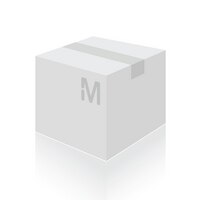CBA025 Sigma-AldrichInnoCyte™ ECM Cell Adhesion Assay, Laminin/Basement Membrane Complex (BMC)
Recommended Products
Overview
| Replacement Information |
|---|
Key Spec Table
| Detection Methods |
|---|
| Fluorometric |
| Product Information | |
|---|---|
| Detection method | Fluorometric |
| Form | 72 Tests (36 Laminin and 36 BMC) |
| Format | 96-well plate |
| Kit contains | Coated 96-Well Plates, Fluorescent Dye, D-PBS, and a user protocol. |
| Applications | |
|---|---|
| Application References | Caroll, D.K., et al. 2006. Nat. Cell Biol. 8, 551. |
| Biological Information | |
|---|---|
| Assay time | 2.5 h |
| Sample Type | Adherent cultured cells |
| Physicochemical Information |
|---|
| Dimensions |
|---|
| Materials Information |
|---|
| Toxicological Information |
|---|
| Safety Information according to GHS |
|---|
| Safety Information |
|---|
| Packaging Information |
|---|
| Transport Information |
|---|
| Supplemental Information | |
|---|---|
| Kit contains | Coated 96-Well Plates, Fluorescent Dye, D-PBS, and a user protocol. |
| Specifications |
|---|
| Global Trade Item Number | |
|---|---|
| Catalogue Number | GTIN |
| CBA025 | 0 |
Documentation
InnoCyte™ ECM Cell Adhesion Assay, Laminin/Basement Membrane Complex (BMC) Certificates of Analysis
| Title | Lot Number |
|---|---|
| CBA025 |
References
| Reference overview |
|---|
| Caroll, D.K., et al. 2006. Nat. Cell Biol. 8, 551. Ekblom, P., et al. 2003. Matrix Biology 22, 35. Li, S., et al. 2002. J. Cell Biol. 157, 1279. Hynes, R.O., et al. 1999. Proc. Natl. Acad. Sci. USA 96, 2588. Aumailley, M., et al. 1998. J. Anat. 193, 1. Nelson, P.R., et al. 1997. Vasc. Surg. 26, 104. Horowitz, A.F., et al. 1996. Trends Cell Biol. 6, 460. Baron von Evercooren, A., et al. 1982. J. Neurosci. Res. 8, 179. |









